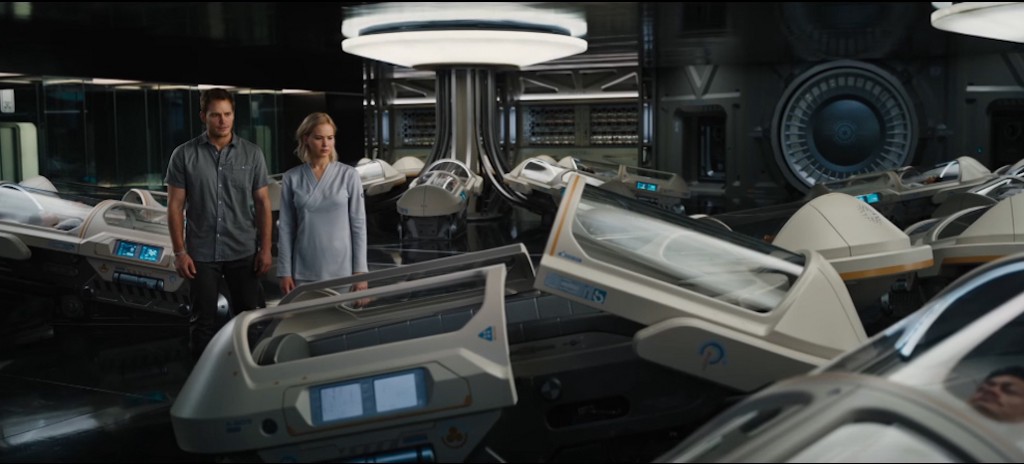This Week in Pods
Just in case we need to escape our planet.

Good news for all of us who are slightly anxious about the fact that we’re currently living on the only known habitable planet: a company called Spaceworks is trying to make long-distance space travel a reality—and yes, they’re doing it with PODS.
Just think of it like that creepy movie Passengers or that other creepy movie Prometheus: hop in the pod, get yourself frozen, and hope that whoever unfreezes you thinks that women are people.
But don’t worry; there’ll always be one human awake to monitor the pods and make sure lovelorn men and/or vindictive androids don’t ruin everything. (Just one human. No second human to help out if the first human hits their head or gets poisoned by the vindictive android or something. This is a great plan and I look forward to it not going wrong in any way.)
The real-world stasis will also differ from Hollywood visions in that the crew won’t sleep through the whole flight. Spaceworks’ team has interviewed several medical experts and most of them agree that shorter, repeat cycles of going in and out of stasis would be safer than a single, long-term cycle. One reason is that would ensure one crewmember would always be awake as a caretaker, taking his or her watch monitoring the spaceship’s systems and responding to emergencies. “So, for the near term — the next 20, 30, 40 years — we can work with something like two weeks’ stasis capability,” says Bradford.
Wait. Two weeks? Why would you want to put someone into space stasis for just two weeks? Is this so you can cram a bunch of people onto a spaceship and then put them to sleep so they won’t feel crowded and uncomfortable? (Insert the obvious, hacky joke about “and if that’s the case, can you do it for airplanes?”)
The pods will include electrical stimulation designed to exercise muscles and keep the static body healthy—which is crucial in a zero-gravity environment, where the body’s natural tendency is to degrade as rapidly as possible—as well as plenty of pharmaceuticals. The pods will also include robot arms, which are probably less comforting than they sound. (I’m guessing they administer drugs, not hugs. Or maybe they flip the humans over so both sides freeze evenly.)
Spaceworks plans to start animal testing in 2018, and I hope to POD that someone livestreams the footage of one crew dog carefully making sure all of the other dogs are sleeping peacefully and getting their electrical stimulation.
The ultimate goal? Being able to keep humans alive, in stasis, for the few months it’ll take to get close enough to the speed of light that Einstein’s time dilation kicks in. At that point, we’ll be able to cover large distances of space without a lot of “time passing,” and if there’s another Earth-like planet out there somewhere, that might be how we populate it.
Wealthy people first, of course, because pharmaceuticals and robot arms aren’t free. As Elon Musk reminds us, “affordable space travel” might eventually drop down to a mere $200,000 per person. Until then, the rest of us have the comfort of knowing that if something goes Passengers-level wrong with the space pods, we won’t be in them.
Support The Billfold
The Billfold continues to exist thanks to support from our readers. Help us continue to do our work by making a monthly pledge on Patreon or a one-time-only contribution through PayPal.
Comments